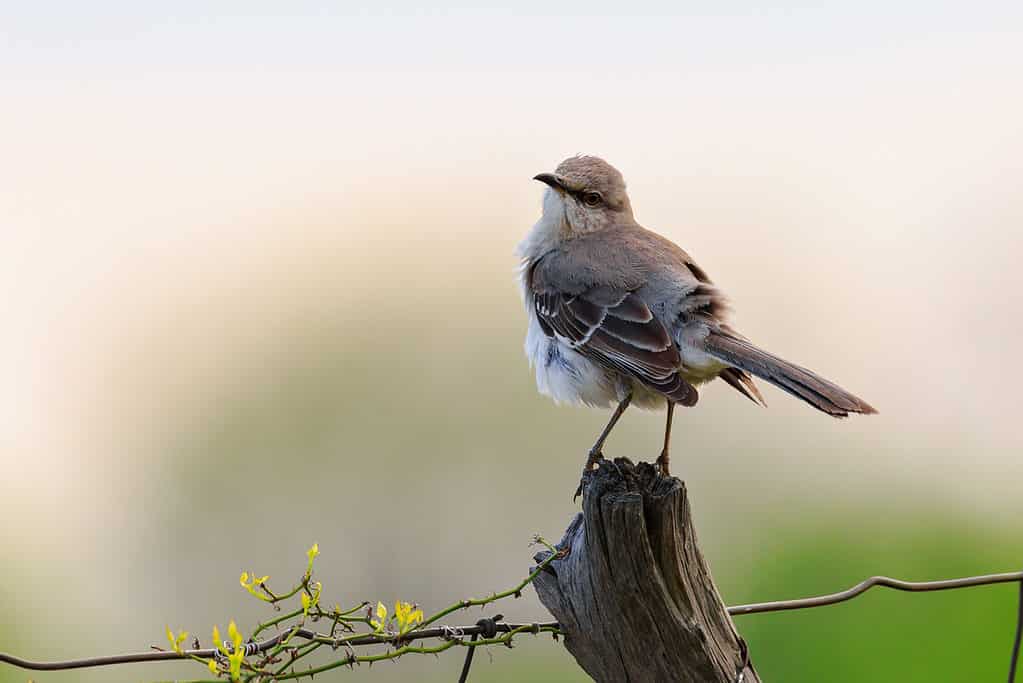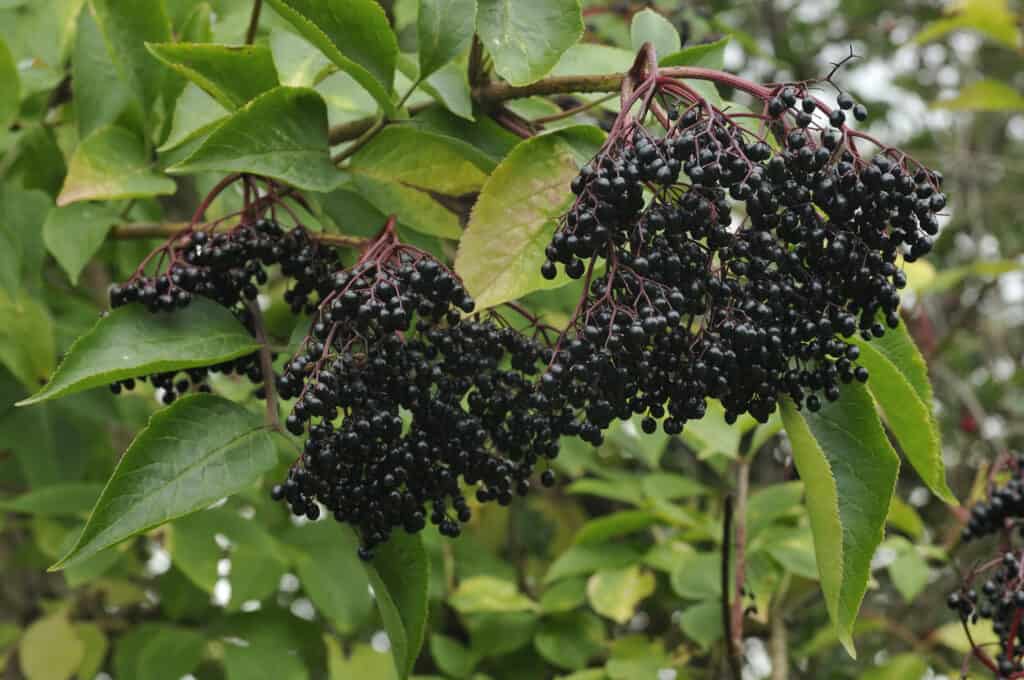Welcome to the fascinating world of the revered avian representative of the Magnolia State. Mississippi, a state located in the southeastern part of the country, is home to a diverse array of natural beauties. And at the center of this thriving ecosystem lives a truly remarkable bird that also happens to be Mississippi’s official state bird.
The state bird of Mississippi is known for its beautiful vocals and mesmerizing mimicry. It has a unique place in the hearts of both natives and wildlife enthusiasts. This beautiful bird epitomizes Mississippi’s rich and lively wildlife with its stunning plumage and unrivaled vocal capabilities.
So, what exactly is the state bird of Mississippi? Let’s find out!

What is the State Bird of Mississippi?
The state bird of Mississippi is the Northern mockingbird or Mimus polyglottos. The Northern mockingbird is a fascinating avian species renowned for its remarkable vocal abilities. It is no wonder that it was chosen as the state bird of Mississippi, a testament to its prominence and popularity within the region. With its distinct appearance and captivating melodies, the Northern mockingbird has captivated the hearts and minds of bird enthusiasts and nature lovers alike.
Northern Mockingbird Appearance and Anatomy
In terms of its physical characteristics, the Northern mockingbird is a medium-sized songbird measuring around 8 to 10 inches in length. Its plumage is predominantly gray, complemented by a white underbelly and white patches on its wings. The bird’s slender body and long tail add to its graceful appearance. One of its most striking features is its prominent white wing bars, which become more apparent during flight, catching the eye of keen observers.
Northern Mockingbird Vocal Characteristics
However, it is the vocal abilities of the Northern mockingbird that truly set it apart from other species. This bird possesses an exceptional talent for mimicry and can imitate a wide variety of sounds with remarkable accuracy. Its repertoire includes not only the songs and calls of other birds but also sounds of non-avian origin such as car alarms, barking dogs, and even human speech. The mockingbird’s vocal range and ability to replicate these sounds with such precision are nothing short of astonishing.
The mockingbird’s vocal talents serve several purposes in its daily life. One of the primary reasons for its diverse and melodious vocalizations is mate attraction. During the breeding season, the male mockingbird serenades potential mates with a medley of songs and imitations, showcasing its vocal prowess as a means of courtship. This symphony of sounds demonstrates not only the male’s physical fitness but also his ability to provide for and protect a potential partner and their offspring.
Using Vocalizations for Territorial Defense
Moreover, the Northern mockingbird uses its vocalizations to establish and defend its territory. It fiercely defends its nesting area by mimicking the calls of other birds, often creating a cacophony of sounds that can confuse and deter potential intruders. By mimicking other species, the mockingbird can create the illusion of a larger and more diverse group of birds, effectively dissuading predators or territorial rivals.
The mockingbird’s vocal versatility and imitative skills are the result of an exceptionally developed syrinx, the avian vocal organ. This complex structure allows the bird to produce an impressive array of sounds by controlling airflow and manipulating the muscles within the syrinx. It is this anatomical specialization that grants the mockingbird the ability to replicate the songs and calls of other birds with such precision and accuracy.
The importance of the Northern mockingbird to the state of Mississippi is reflected in its status as the official state bird. The bird symbolizes the rich natural heritage of the state and its unique and diverse ecosystem. It serves as a reminder of the beauty and complexity of the natural world and the importance of preserving and protecting it for future generations.

The Northern mockingbird (pictured) is the state bird of Mississippi, Florida, Tennessee, Texas, and Arkansas.
©iStock.com/cmcneill17
Northern Mockingbird Life Cycle
The life cycle of the Northern mockingbird encompasses several stages, from courtship and breeding to raising offspring and maintaining territories.
Breeding
The breeding season for Northern mockingbirds typically begins in the spring, around March or April, and extends into early summer. During this time, male mockingbirds establish and defend territories, utilizing their vocal abilities to attract mates. The males perform elaborate songs and mimicry displays to court females, showcasing their fitness and ability to provide for a potential mate and their future offspring.
Nesting and Egg-Laying
Once a pair has formed, the female selects a nesting site within the male’s territory. Northern mockingbirds build cup-shaped nests made of twigs, grasses, and other plant materials, usually in dense shrubs or trees. The female is primarily responsible for constructing the nest, while the male actively participates by providing building materials.
The female then lays a clutch of two to six eggs, which she incubates for about 12 to 13 days. Both parents take turns incubating the eggs, with the male often taking the night shift. This shared responsibility allows the parents to ensure the eggs are properly cared for and protected.
Hatching
After hatching, the young mockingbirds, known as nestlings, are altricial, meaning they are born featherless and helpless. The parents work together to feed and care for the nestlings, bringing them a diet consisting mainly of insects and other small invertebrates. The nestlings grow rapidly and develop feathers, gradually becoming more active and independent.
Around two weeks after hatching, the young mockingbirds fledge, leaving the nest for the first time. However, they still rely on their parents for food and guidance. The parents continue to feed and protect the fledglings for several weeks, teaching them important survival skills, including foraging techniques and vocalizations.
As the summer progresses, the fledglings gradually become more self-sufficient, learning to find food on their own. The family bonds start to loosen, and the young mockingbirds disperse, seeking their territories. These young birds may remain in the vicinity of their birthplace or venture farther afield in search of suitable habitats.
Once they reach maturity at around one year of age, the Northern mockingbirds are ready to breed and continue the cycle of life, ensuring the perpetuation of their species.
Northern Mockingbird Diet
The Northern mockingbird is an omnivorous bird with a diverse and adaptable diet. Its feeding habits vary depending on the availability of food sources and the season. The bird’s diet consists of a wide range of food items, including insects, fruits, berries, seeds, and even small reptiles and amphibians.
During the breeding season, the Northern mockingbird primarily feeds on insects and arthropods. It forages on the ground, in shrubs, and even in flight, searching for beetles, grasshoppers, ants, spiders, and caterpillars. The bird’s sharp eyesight and agile flight enable it to locate and capture these small prey items with ease.
In addition to insects, the Northern mockingbird incorporates fruits and berries into its diet, particularly during the fall and winter months when insect populations decline. It consumes a variety of fruits, including berries from shrubs, trees, and vines. Commonly consumed fruits include mulberries, blackberries, grapes, and elderberries. This dietary diversity not only provides the mockingbird with necessary nutrients but also aids in seed dispersal as the bird consumes the fruit and excretes the undigested seeds in different locations.
Seeds also make up a significant portion of the Northern mockingbird’s diet, especially during the colder months when other food sources are scarce. It consumes a wide range of seeds, including those from grasses, weeds, and various plants. The bird’s strong beak is well-suited for cracking open seeds, allowing it to access the energy-rich nutrients within.

Elderberries (pictured) are a favorite of the Northern mockingbird.
©Martin Fowler/Shutterstock.com
Northern Mockingbirds and Anting
Interestingly, the Northern mockingbird is known to engage in a behavior called “anting.” Anting involves rubbing ants or other small arthropods onto their feathers, presumably to release chemicals that deter parasites or provide relief from itching. While the exact reasons for this behavior are not fully understood, it is believed to aid in the bird’s overall health and well-being.
The adaptability of the Northern mockingbird’s diet is a testament to its resourcefulness and ability to thrive in various environments. Its opportunistic feeding behavior allows it to exploit a wide range of food sources. Thus, ensuring its survival even in challenging conditions. By incorporating insects, fruits, berries, and seeds into its diet, the Northern mockingbird exemplifies its ability to adapt and take advantage of available resources throughout the year.
How Common Are Northern Mockingbirds?
Throughout its native habitat in North America, Northern mockingbirds are widespread and frequent. Numerous environments support them, including residential areas, parks, gardens, forests, and scrublands. Because of the species’ flexibility and adaptability, it is abundant and widely distributed.
In the southern regions of the United States, including states like Florida, Texas, and Arizona, the Northern mockingbird is a common resident bird. In the Southeast, where it has become known as the state bird of Mississippi, Tennessee, Florida, Arkansas, and Texas, it is also a frequent breeder. The Northern mockingbird has been transplanted outside of its natural habitat to Hawaii and other places where populations have grown.
Surviving in Urban Environments
The species’ capacity to flourish in a variety of habitats is one of the elements that contribute to its widespread distribution. It can adapt to urban environments and utilize man-made habitats for breeding and foraging, such as gardens and parks. Due to its versatility, the Northern mockingbird has been able to expand its range into previously unexplored areas.
The Northern mockingbird’s effective breeding tactics are another factor in its widespread distribution, as we mentioned earlier. These birds reproduce a lot, with pairs often raising many broods each year. The female lays a clutch of eggs in a cup-shaped nest that the male builds in a tree or bush. Incubating the eggs and raising the hatchlings involve active participation from both parents. This strong reproductive output guarantees constant population expansion and adds to the abundance of the species.
The Northern mockingbird’s singing prowess also contributes to its prosperity and abundance. In addition to luring mates, it also helps create and defend territory with its melodic songs and superb mimicry. The bird’s vocal repertoire aids in breeding success and population density by allowing it to communicate with other members of its species and ward off possible predators.

Northern mockingbirds can be heard singing along the coast of the Mississippi River (pictured), among other areas that make breeding and foraging easier.
©John Brueske/Shutterstock.com
Where to Find Northern Mockingbirds in Mississippi
Mississippi, as the state bird’s namesake, is an excellent place to find Northern mockingbirds. These charismatic and vocal birds can be spotted throughout the state in a variety of habitats, showcasing their adaptability and versatility.
One of the best places to find Northern mockingbirds in Mississippi is in urban and suburban areas. These birds have become adept at utilizing human-altered environments, such as parks, gardens, and residential areas, for nesting and foraging. Their affinity for urban habitats is due to the availability of food sources like insects, fruits, and berries. They also enjoy the presence of trees and shrubs for nesting sites. It is common to hear the melodious songs and imitations of mockingbirds in residential neighborhoods and city parks throughout the state.
The Benefits of Mississippi’s Natural Habitats
Furthermore, Mississippi’s woodlands and forested areas provide ample opportunities to observe Northern mockingbirds. State and national parks, such as Tombigbee National Forest and DeSoto National Forest, offer suitable habitats for these birds. Mockingbirds can be found perched on tree branches, singing their melodious songs and mimicking other bird species. Exploring the wooded areas, trails, and clearings within these parks increases the chances of encountering these delightful birds.
In addition to urban and forested areas, open fields, meadows, and agricultural lands can also attract Northern mockingbirds. These habitats provide ample opportunities for foraging on insects and seeds. The birds may be seen perched on fences, power lines, or shrubs, keeping a watchful eye for potential prey.
It is worth noting that Northern mockingbirds are present in Mississippi throughout the year. They are resident birds in the state. However, their numbers may be more conspicuous during the breeding season, which typically occurs from spring through early summer. During this time, male mockingbirds actively defend their territories. Their defense includes singing and displaying their impressive vocal abilities to attract mates and ward off intruders.
Northern Mockingbird Symbolism
Northern mockingbirds hold significant symbolism in various cultures and contexts. Their symbolic meaning often revolves around their vocal abilities, adaptability, and perseverance.
Mockingbirds are often associated with the concept of communication. Their exceptional mimicry and diverse repertoire of songs and calls symbolize the power of expression and the ability to effectively convey messages. They remind us of the importance of clear and meaningful communication. They encourage us to listen attentively and use our voices wisely.
Another symbol attributed to mockingbirds is resilience and adaptability. These birds can thrive in a variety of environments, including urban areas, forests, and open fields. Their ability to adapt to different habitats represents the capacity to adjust and persevere in the face of challenges and change. Mockingbirds inspire us to embrace resilience, stay adaptable, and overcome obstacles with grace and determination.
In literature and folklore, mockingbirds often embody innocence and purity. Their beautiful songs and gentle demeanor evoke a sense of tranquility and harmony. They remind us of the simple joys in life and the importance of maintaining a pure and kind-hearted spirit.
Furthermore, mockingbirds symbolize creativity and versatility. Through their ability to imitate the sounds of other birds and even human-made noises, they demonstrate their creative expression and adaptability. Mockingbirds encourage us to explore our creative potential, think outside the box, and embrace versatility in our endeavors. It certainly makes sense why the Northern mockingbird is the state bird of Mississippi!
Thank you for reading! Have some feedback for us? Contact the AZ Animals editorial team.








